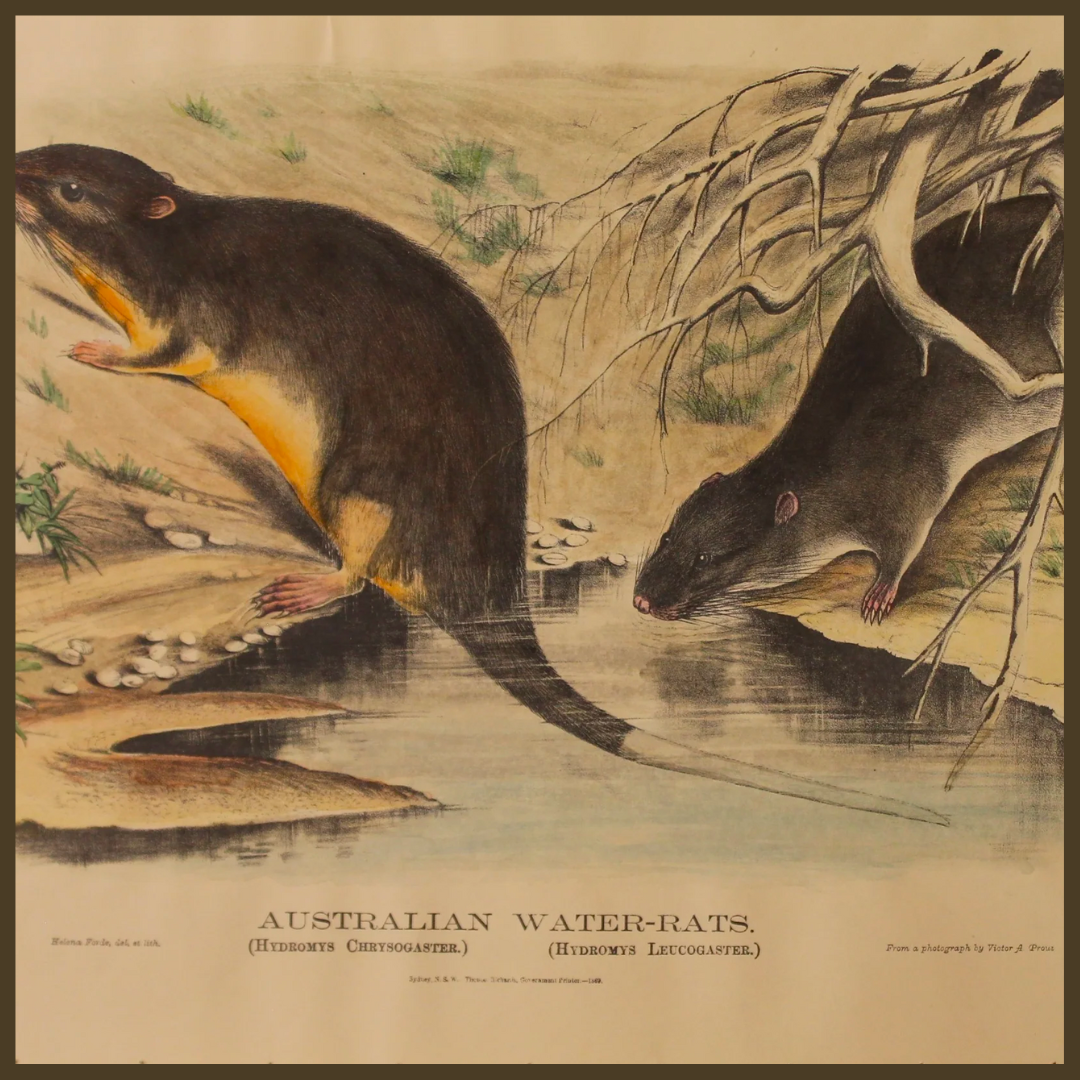
INTERESTING POINTS ABOUT ANTIQUE PRINTS
Share
Collecting Antique Prints and Maps is a fascinating form of collecting. Few pursuits allow the collector to satisfy both their passion for art and beauty as well as investing and researching. Every print has a back story. Like most art, it's creation commenced with a commission, and from there, the image takes on a life and story of its own. We are as passionate about the stories of each of our prints as we are the beauty. Here are a few interesting points about antique prints that you might not know.

Original Antique Lithograph of australian animals by Karl Joseph Brodtman in 1830
Interesting points about antique prints:
- An Antique Print is often described as an "original." It was created by one of the conventional techniques of the time, and the techniques described as "Original copperplate engraving," "Original lithograph," "Original Aquatint," meaning it was printed using the copper plate, limestone block, steel etched surface, at the date stated. The type of print often is an indication of its age
- Often a print, once identified as original, has a publisher and date of publication at the base. However, if it has been orphaned from its folio, the seller uses knowledge of publisher, engraver, type of paper and printing technique to give an approximate date, or "circa."
- Publishers, to make printing affordable, often issued chapters or parts to subscribers. The illustrations were published over a period.
- Contributors often funded the work of some artists if they had a particular interest in their work. They commissioned voyages or specific scientific investigations and so "purchased" the work that resulted in paying installments and providing the funds for the project.

The White Vented Crow, Original hand coloured copperplate engraving by John White, the Surgeon General of the First Fleet accompanying Governor Arthur Phillip in 1789
- Once the contributors received their installment/chapter/part, they then proceeded to have their print hand coloured. Once they had all of their installments or parts, they then went to a bookbinder and chose their bindings, covering materials, etc. This then explains why the same copy of some works had different covering material and bindings as these were done separately by the investor.
- This also explains the differences in hand colouring techniques….why the colour of some work is better than others. John Gould, for instance, had his wife colour all of his work before it was sold. This gave him control of the quality of colouring of all of his work. His work is beautiful….his wife was a talented artist
Examples: George French Angas' "South Australia Illustrated" published in London between 1846 -47. The folio was published by Thomas McLean, London, and issued to 200 subscribers, in ten two-monthly parts for one guinea per part. Each lithograph was hand-colored as issued.
John Gould published "Birds of Australia" in Seven volumes, between 1840-1848. It was issued to 250 subscribers worldwide. This first comprehensive collection of Australian ornithology included 681 hand-colored lithographs and descriptions. Of these, 328 were new to science. In this case, the publishing date may be "1840-1848", as all lithographs were published consecutively between these dates.
Original hand coloured lithograph by John Gould printed between 1875 and 1888
Reproduction or Limited Editions of "Antique Prints" that look old but have been copied using modern technology ie, photography or scanning, then printed using modern reproductive techniques. Here is where knowledge of colour pigments and how paper was made through the centuries is essential for authentication purposes. These prints are often very attractive but do not hold a great deal of value
- "Re-strikes" are a later printing of the original copperplate or lithograph, if it has survived over the years. However, if it was printed using a soft copperplate, it would be worn and often not of good quality. These can often be identified by taking a closer look at the edges of the print. Given that our ancestors needed to recycle materials, this is rare. Engraved copperplates that had served their purpose were often melted down to create a new plate.
Bavarian limestone lithographic slabs were cleaned and reused. The maximum images taken from a copper plate was only 100.
The next time you admire a print or map – consider how it came to be.
Related Tag: Antique Prints Online




